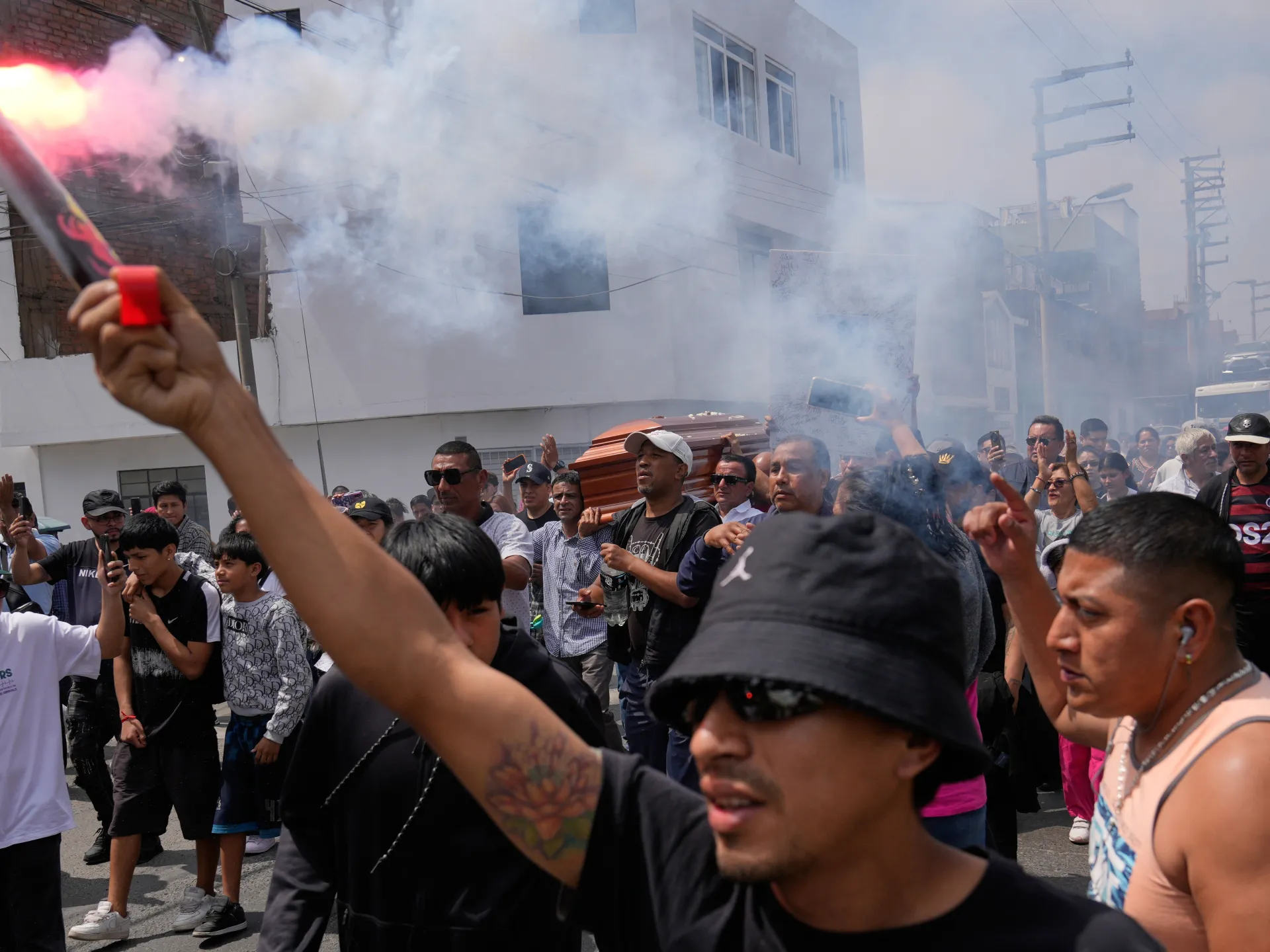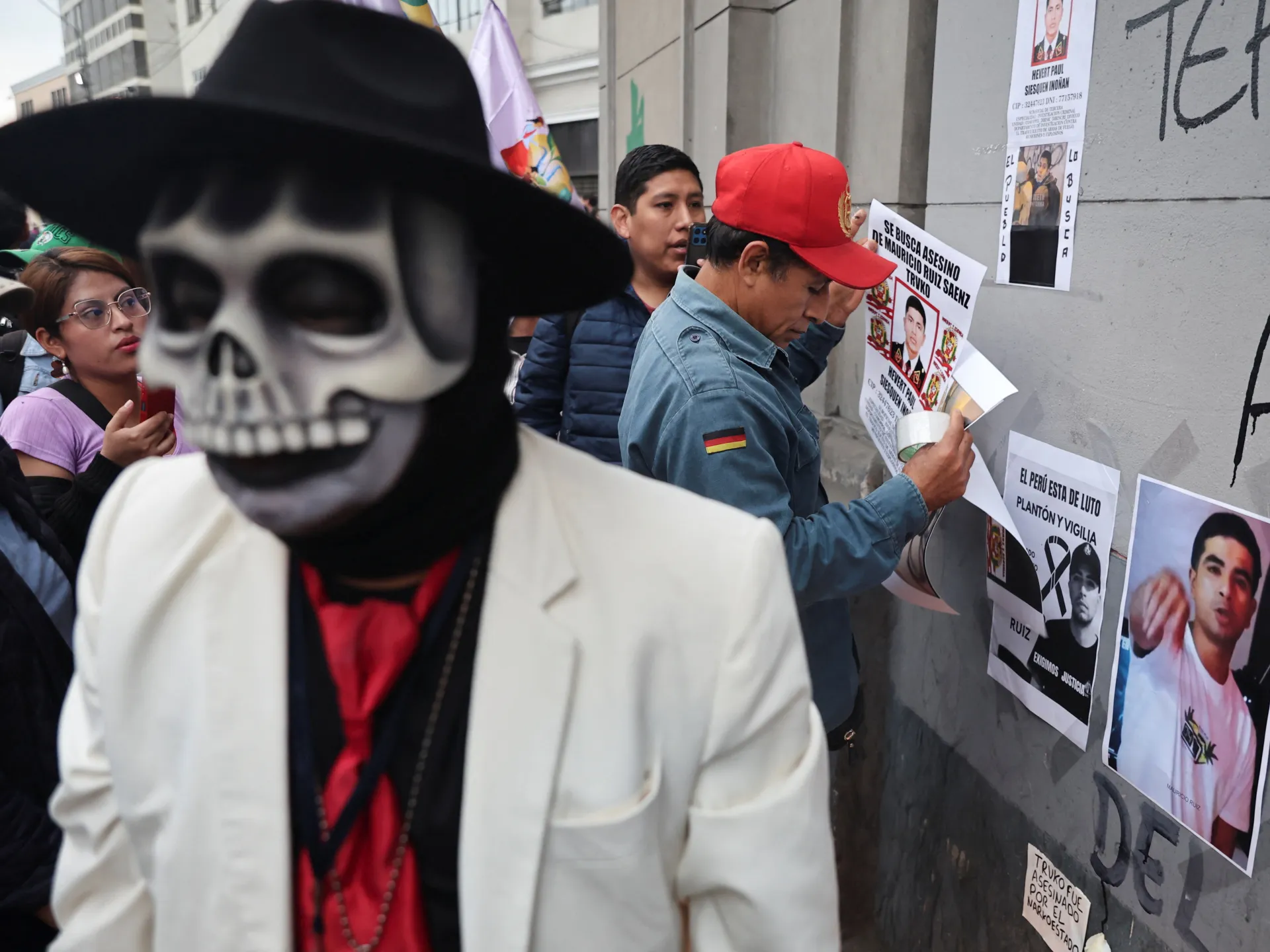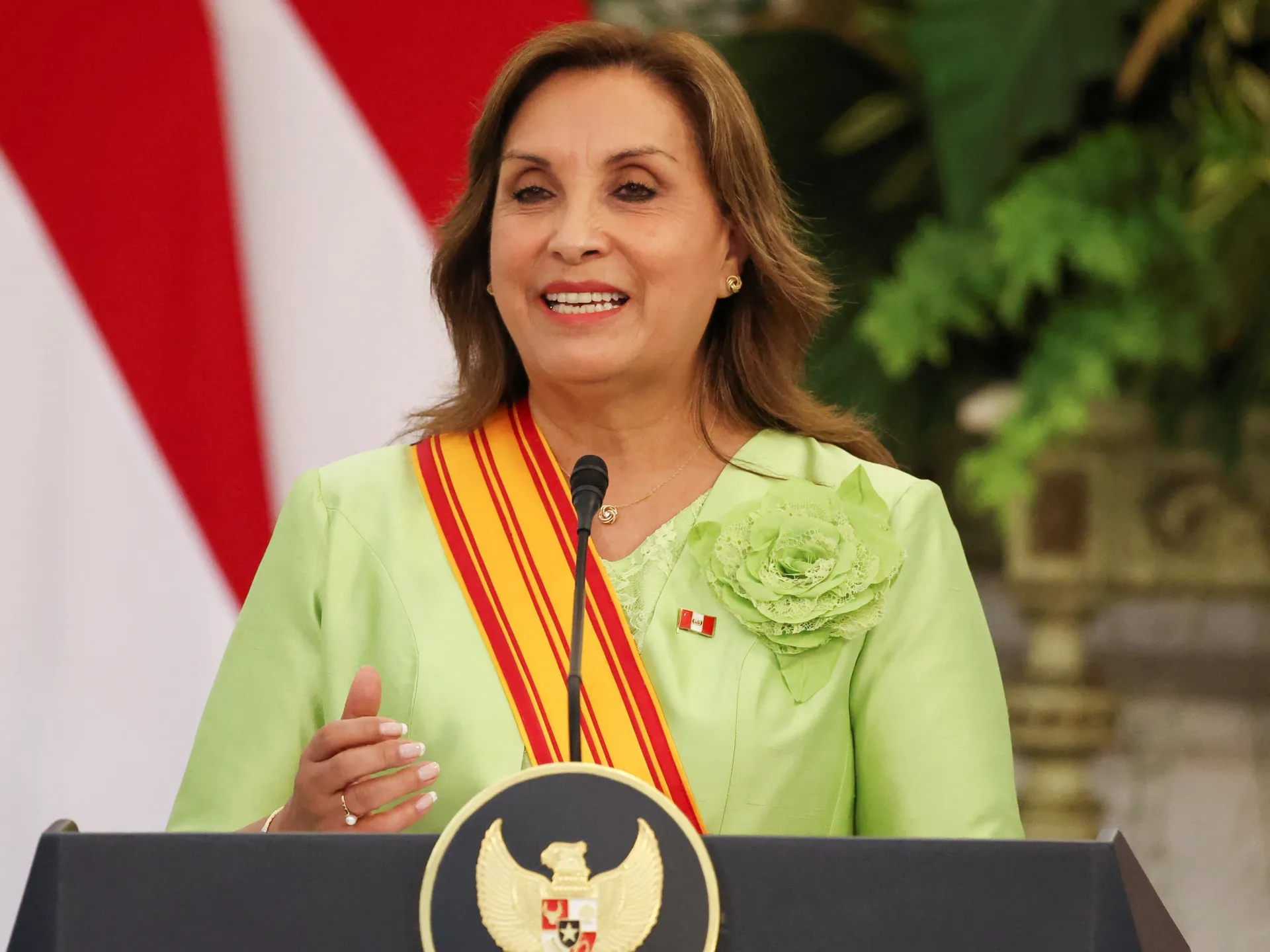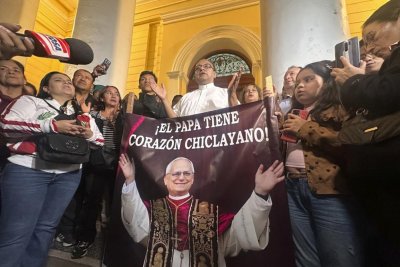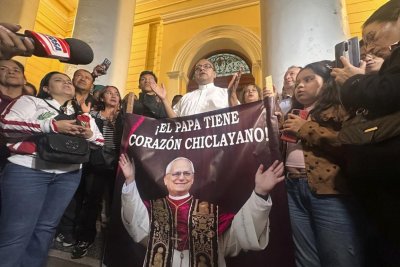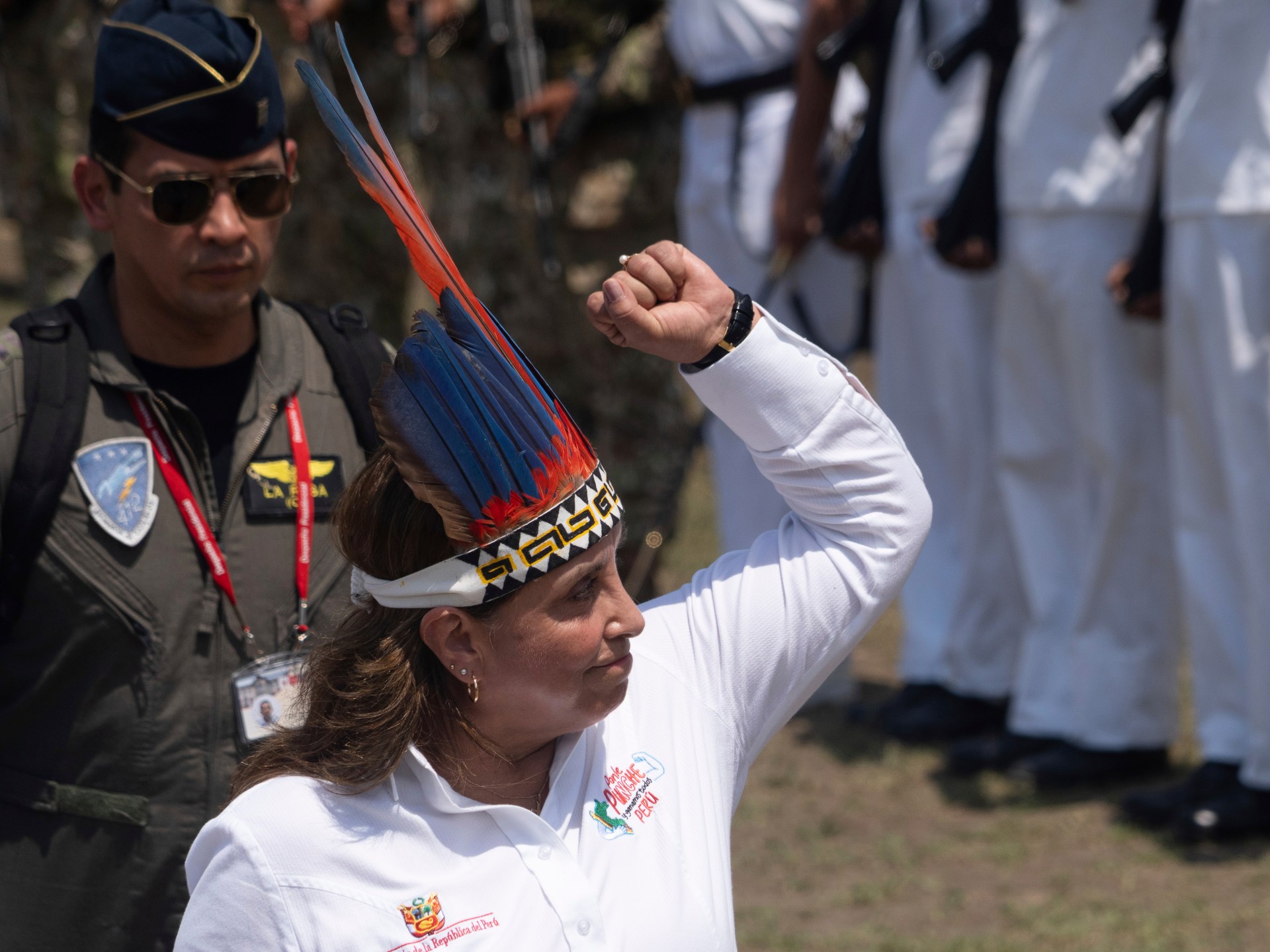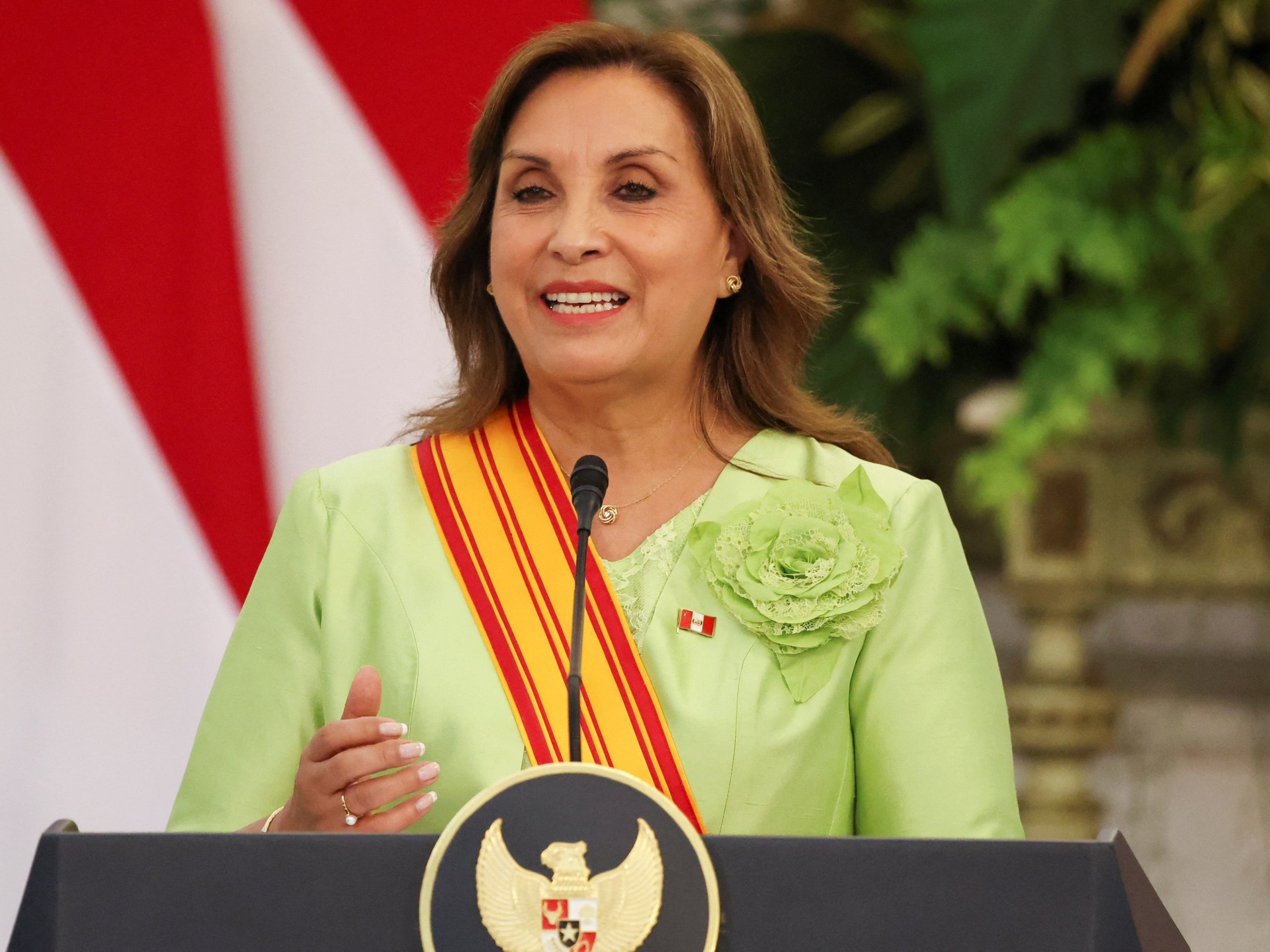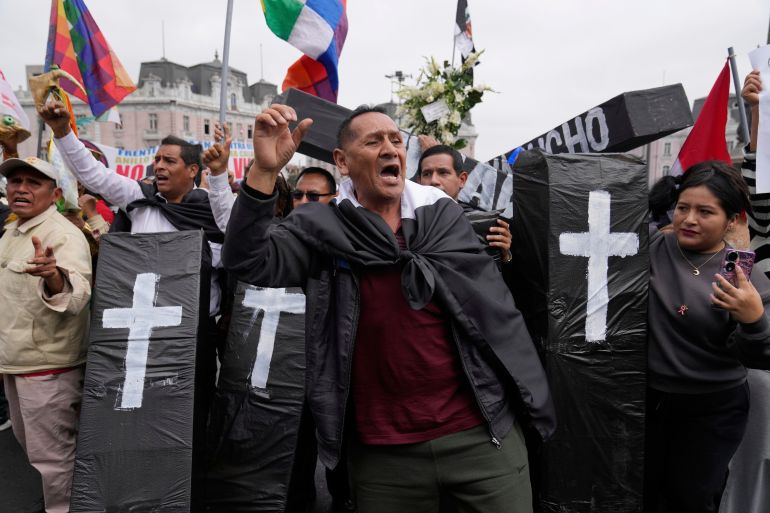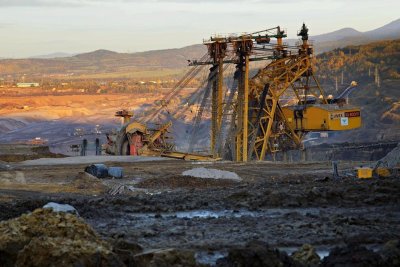State of emergency declared in Peru’s capital Lima amid protests | News
The state of emergency lifts constitutional rights, including the right to protest, amid popular unrest over the rise in extortion and killings.
Peru’s Interim President Jose Jeri has declared a state of emergency in the capital, Lima, to stem a wave of protests that contributed to the recent downfall of his predecessor.
In a televised message on Tuesday, Jeri said the emergency in the city would last 30 days.
Recommended Stories
list of 3 itemsend of list
“Wars are won with actions, not words,” the president said, adding that he is planning a new approach to fighting crime that he described as going “from defence to offence”.
Under the state of emergency, the government can send the army to patrol the streets and restrict freedom of assembly and other rights.
Al Jazeera’s Mariana Sanchez, reporting from Lima, said the announcement comes after six days of uncertainty over whether the interim government would push ahead.
In the decree formally declaring the emergency, the government did not mention how it intended to gather critically needed intelligence to curb extortion cases, which are estimated at 18,000 this year, up 30 percent from last year, Sanchez said.
The rise in extortions has also led to an increase in killings in recent years. Between January and September, police authorities reported 1,690 homicides, compared with 1,502 during the same period of 2024.
“The state of emergency will lift constitutional rights and people will not be able to protest,” Sanchez said.
Dina Boluarte was removed as president by Peru’s Congress on October 10 after an impeachment during which lawmakers said she had been unable to tackle the crime wave. Jeri, the parliament speaker, replaced her immediately and will serve as interim president until July next year.
Peru has been roiled by weeks of antigovernment protests over corruption and organised crime led by Gen-Z activists.
On Thursday, protests to demand Jeri’s resignation turned violent. One person was killed and about 100 were injured, including police officers and some journalists.
Jeri has said he will not resign.
Earlier, Boluarte had declared a 30-day state of emergency in March following the murder of a famous musician, but the move did little to reduce crime.
Paul Flores, a well-known cumbia singer, was killed when assailants attacked the bus he was travelling on in an apparent attempt to extort the operator.
